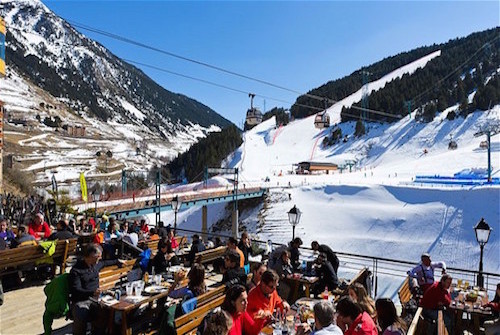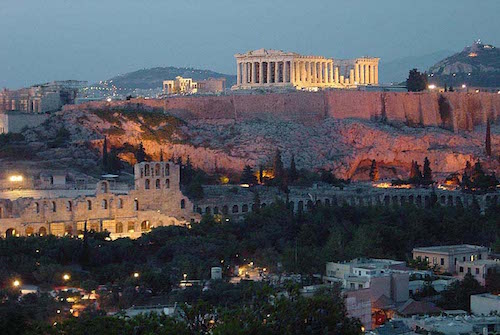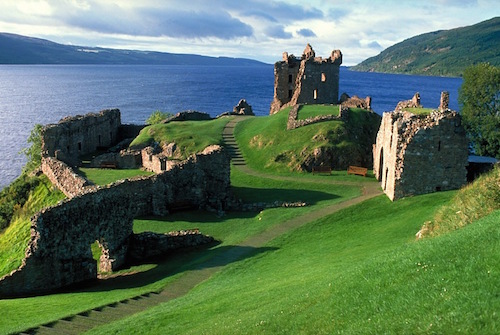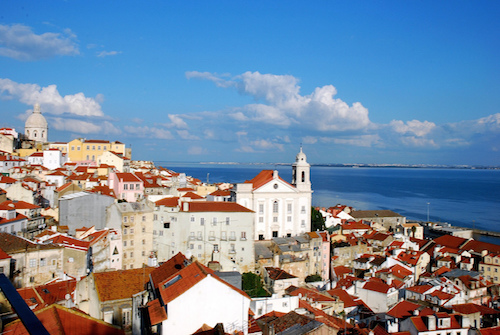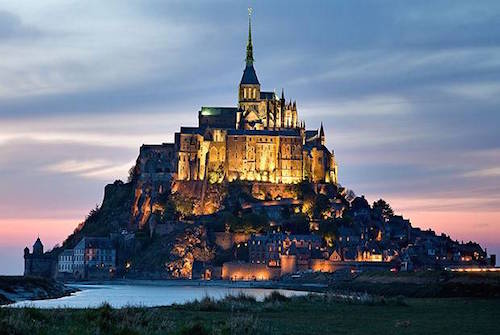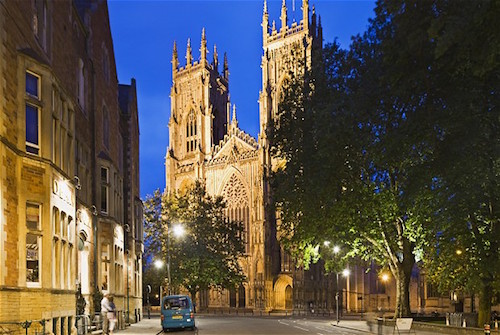Special Vacation Edition: Journey’s Favorite European Vacations – Part I
Our family of four was privileged to serve as missionaries to France and Belgium for many years. That meant that every one of our vacations was a European vacation. From our home south of Brussels, we could be in London before lunch, the Swiss border in five hours, Paris in three hours, Amsterdam in two hours – all by car. When we lived in Tours, France we could be almost anywhere in France within just a few hours – again by car. In addition, ministry sometimes took us to some of Europe’s most beautiful destinations, giving us the opportunity to combine work and play.
So, as many enjoy their summer 2016 vacations, we thought we’d help you plan your vacation for next summer. Or even earlier as the crowds are smaller and the rates are usually cheaper off-season.
Below are ten of our favorite European vacation destinations, all carefully tested for you (some more than once). They are in alphabetical order. We’ve ten more for you and will post in our next vacation blog.
Until then, enjoy these little visits to these great places as you make your plans to go in person.
1. Andorra
This tiny principality of just 180 square miles (the size of San Jose, CA) is wedged between France and Spain, high in the Pyrenees. Wild horses run free on the slopes of these rocky and stunning mountains where people from around the world go to hike and ski. Beautiful ski lodges and lifts dot the snow scapes. Street cafés in the capital city, Andorre la Vielle, are unique for the brisk air and the rugged mountain beauty that surround them – it all makes great coffee taste even better. Europeans have long loved Andorra for a very practical reason also: tax-free shopping. On a continent where the VAT on every purchase (the nearest US parallel is the Sales Tax) is 21% (imagine adding that to the cost of every car, couch, and cell phone you but!), tax-free is certainly worth the trip, especially if you just happen to be traveling the Mediterranean coast between France and Spain. Practically speaking, however, there is only one long and winding road in to Andorra and the same long and winding road out from the Mediterranean coast. We were in Andorra for a few days around July 4th one year and enjoyed the street cafés one day only to have to hit the road in a hurry as a blizzard hit the capital city the next day. But take the time and visit this little known treasure of Europe. Well worth the trip.
2. Athens, Greece
Walking the grounds of the Acropolis is one of the most unique experiences anywhere, a walk back in time to the foundations of western civilization. Viewing up close the Parthenon, the Herodeon, and the beautiful Caryatides is not to be missed by the lover of history or those who don’t yet love history. Also noteworthy is the rebuilt Ancient Agora where at the height of their world dominance, Greeks came to transact commerce. It was also here at the Agora that Socrates was imprisoned and forced to drink hemlock for his thought crimes against the state. The Monastiraki is the Super Bowl of “flea markets” for shoppers, stretching out endlessly and filled with items of all kinds. While we’re on the subject of shopping, you’ll love the shops and restaurants to be found in the Plaka. The Plaka is where you will find jewelry shops by the score and yes, you can deal. Toward the center of Athens you can see the majestic buildings of the Parliaments (old and new). Just below the new parliament is the Tomb of the Unknown Soldier as well as the impressive changing of the guard. Be sure to snap a photo with the colorfully uniformed guards. They won’t move or smile as you do, but they won’t stop you either. The National Library and Athens University are just a few feet away and the doors are open to the public. Be on the lookout for the National Gardens and plan to spend at least a morning or afternoon enjoying this beautiful and peaceful nature sanctuary. Downtown Athens has its share of restaurants, but get off the tourist path and plunge into the neighborhoods to discover hillside cafés and restaurants that are not to be missed – simple but incredible dining. Next to the Acropolis is the Areopogus (Mars Hill) where Paul preached the Gospel in Acts 17. Secret treasure: just behind the small stone St. Demetrius orthodox church on the tree side of the Acropolis is a coffee shop seemingly suspended up in the air. It is surrounded by trees and silence, and has the most spectacular view of the Acropolis.
3. Azay-le-Rideau, France
Azay-le-Rideau – château and village. Often visited, but never visited enough. My favorite destination in the world after home and family. This petite château is the absolute definition of elegance and style. The exterior lines of the château are graceful and understatedly beautiful. The interiors (all open) reveal beautifully furnished rooms that are smaller, warmer, more comfortable than the larger and better known châteaux of the Loire Valley – you will want to take your time. The grounds around the château are worthy of hours of walking for relaxation and reflection. In the summer, Azay is home to a beautiful sight-and-sound experience that can only be described as otherworldly. The village of Azay is a most fitting setting for this elegant château with medieval walking streets, cafés, and unique shoppes. Be sure to visit the atelier of aquarelliste (water color artist), Didier Fontaine at 15 rue Balzac on the approach to the château.
4. Bruges, Belgium
If you’ve been to Bruges, you’ve been to the best of Belgium and the best of Europe’s small to medium towns. This one is just what you think Europe’s towns should be: cobblestone streets, great cafés (and in Europe, they don’t close the outside tables when the temps fall below 60 degrees.), gorgeous town hall, beautiful churches, belfries with bells ringing, horse drawn carriage rides, and plenty of trees, lawns and flowers. Le Basilique du Saint Sang (The Basilica of the Holy Blood) is just off the main town square and is a must see. You can also climb the stairs of the town belfry and enjoy the incredible views – the entrance is on the town square. Warning: they ring the massive bells throughout the day, whether visitors are feet away or far away! Dali lovers will find a reason to linger in the city square. What makes Bruges unique is the way the town is laid out, its gorgeous parks and canal (don’t miss the boat ride on the town they call the Venice of the North), and . . . the lace and tapestry shops – you could spend days looking at and shopping for these two quintessential crafts of Flanders. Don’t expect to buy them cheap for these are not cheap knock-offs, but the real thing and well worth the money. Be sure to visit the lace center and the area of town where you can see women actually making handmade lace.
5. The Great Glen, Scotland
I often tell people that visiting Scotland is just what you think it will be, only more so: beautiful, rugged, mystical, unspoiled, ancient – all of these words describe Scotland, and most especially the captivating flow of land and lakes called The Great Glen. The Great Glen stretches out about 65 miles through the Scottish Highlands, stretching down from Inverness on the northeast coast, southwest to Fort William on the west coast. Much of the Glen is a series of breathtakingly beautiful, deep and dark lochs all connected by rivers. Among the lochs of the Glen are Loch Ness and Loch Lochy. At Loch Ness you can stop for lunch, visit the museum and have your picture taken with Nessy. It’s never a problem if she doesn’t show up for the picture because a bad photo is impossible with the landscapes all around you. As you drive through the passes from lake to lake, you will be overwhelmed by waters, the trees, the slopes and the skies. The road runs beside and at the same level as the surface of these profoundly deep (700 feet) and mystical lakes surrounded by lush tree-covered mountains. A village here and a small collection of simple structures there are, for the most part, the only signs of civilization to be seen as you drive. I can still see the simple but elegant home set out under trees on a small elbow of land in Lake Lochy. On sight, it became my favorite place in all of this spectacularly beautiful country of Scotland. As we drove along the water’s edge toward in that peaceful setting, I had found my dream home. Southeast from Fort William leads to Stirling (home of William Wallace). The road southwest takes you to Campbeltown and the Mull of Kyntire.
6. Spiez, Switzerland and Surrounding Area
No words, absolutely no words can describe the beauty, grandeur, depth and sparkling clean of Europe’s most beautiful and safest country. Ice skating and swimming on the same day in Interlachen. The post card beauty and charm of the village of Spiez. Like all Swiss villages, it is absolutely spotless and its citizens warm and friendly. Here you’ll find a wonderful chateau, a beautiful clear-blue lake, and old white stone church where Bach recitals are still a staple – I will never forget the sound of the incredible music the day we found this church. Near Spiez, you can travel up into the high Alps where people still live and work their farms in dirt floor cabins during the summer months. But be warned: due to the altitude, your car will only make it so far up and then you’ll have to hike it up quite a ways to your destination. But be sure you do as the view is unlike any other I’ve ever seen anywhere. You can also enjoy the Alps by driving the three highest passes all in one day or by driving up to the Bernina Pass on the Italian border at about 3000 meters. Again, you will have to nurse your car a bit as the high altitudes tend to overheat auto cooling systems. The Jungfrau is world famous as “The Top of Europe” and its skiing is among the best on the planet. The apple strudel and coffee is reason enough to make the trek up the mountain! Make the short drive over to Brienz where you can visit the world famous woodwork shops of Switzerland and pick up a cuckoo clock, wooden figure or even furniture.
7. Lisbon, Portugal
Like many great cities, the skyline of Lisbon is marked by a unique and identifying monument. In this case, it is the Cristo Rei monument towering in the sky and reminiscent of the Cristo Redentor of Rio de Janeiro. The city center, the Baixa, is a great collection of walking streets filled with great shopping, street vendors and musicians, restaurants and cafés. While there, we saw a street young accordionist who had trained his small dog to help him earn his daily bread. A great place to start is the principal walking street, Rua Augusta. Be on the lookout for the Elevator de Santa Justa down a side street. Be sure to take the walk out to the Praça do Comércio and then along the plaza to the water’s edge. While in this area, be sure to visit the Conceição Velha church. Lisbon is home to the Oceanarium. Not only is it Europe’s largest aquarium, but it really is world class. Nearby is the Vasco de Gama Tower along the water, and Vasco de Gama Mall. The mall was unique for its use of water inside and out: arching fountains and jets of water, glass ceilings completely covered in running water – all reflecting the sun in patterns across the mall. High atop the treed hill overlooking Lisbon is stone-walled St. George’s Castle with its great views of the city. The trams up and down the hills and cobblestone streets of Lisbon are a special treat – and a welcome rest from walking. In the Belém District of the city is the stunningly beautiful Jeronimo Monastery, Belém Tower, and Tropical Gardens.
8. Normandy France
Normandy is known for the D-Day Invasion of World War II, and rightly so. Its now silent but ever speaking beaches, the memorials and the war cemeteries – large and small – both move and still the heart as one reflects on the battle of those days that claimed thousands of young men’s lives. On the occasion of our first visit to the American Cemetery at Colleville-sur-mer, though our daughters were nine and six years of age at the time, even they were struck by the solemn atmosphere that pervades. The trip to Normandy to experience this and to see the beaches at Gold, Juno, Omaha, Sword, and Utah where the battle took place is reason enough to go. As a part of any D-Day trip to Normandy, there are other must-see destinations throughout the area: the cliffs of La Pointe-du-Hoc (where Navy Rangers spearheaded the invasion with their own bodies); Arromanches 360-Degree Cinema, Sainte Mère Eglise (town and site of a major skirmish), the Merville large gun batteries, the German Cemetery at La Cambe, and the Peace Memorial in Caen. But Normandy is much more than battle sites and cemeteries. The unspoiled countryside, the stone houses, the port towns, the sea side and more are all uniquely beautiful. A meal in any of the fishing villages is unforgettable for the quality and the setting. The “mom-and-pop” restaurants and cafés of the region are known for having a half-dozen simple tables and delicious straightforward Normandy dishes – mussels, sole, veal, omelets, crèpes and the incredible regional cheeses and breads. Le Mont St. Michel is the dreamlike mountain abbey rising like a city in the clouds off the Normandy-Brittany border. This abbey was begun on this rock in the 7th century. As it grew, homes, shops, and ateliers sprang up along the narrow spiral streets that curl around the island. The winding walking street that climbs up the mount weaves between those shops and restaurants today. The walk up to the abbey could rightly be called a climb, but it is worth every step for the stark, beauty of this medieval abbey and its rooms, as well as the views off the Normandy-Brittany coast.. “Notre Dame” is not only in Paris, but you’ll find a beauty of a “Notre Dame” in Rouen – This cathedral is one of France’s most beautiful. Rouen itself is a beautiful city with its walking streets, unique town clock, and the simple memorial that stands on the spot where Joan of Arc (Jeanne d’Arc) was burned at the stake. Toward Paris, but still in Normandy you’ll find the wonderful house, gardens and studio of impressionist painter, Claude Monet’s at Giverny. Americans often express surprise at the painter’s house and gardens, but they are an undoubted national treasure of France and well worth the drive. Leave plenty of time to enjoy the gardens where the master painted many of his masterpieces, most notably, his water lilies.
9. Prague, Republic of Czech
An absolute, top-of-the-list favorite. Prague is one spectacular city, with one beautiful building and church (be sure to see St. Vitus) after another, as well as Prague Castle and a world class Opera House. The astounding and completely unique Astronomical Clock at the Town Square is a creative and mechanical work of art guaranteed to take your breath away. Just a stone’s throw away is the massive monument to one of the fathers of the Reformation, Jan Hus. The Charles Bridge is not to be missed for its statuary, artists and views. To the right, just before the bridge is a shop that specializes in gorgeous, hand painted eggs – each one is a work of art. Be sure to have your map in hand as you make your way to and through the walking streets toward the Jewish Cemetery, an off-the-beaten-path destination but a not-to-miss destination. In the neighborhood you’ll find plenty of stores where you can buy your favorite Russian nesting dolls in classic or contemporary designs – from Putin to the Beatles, icons to US Presidents. The Loreto is home to a “monstrance,” a solid gold piece shaped like the sun, 3 feet tall and 2 feet wide, with 6221 cut diamonds set in the sun and its rays. Needless to say, it’s just one more reason to visit Prague.
10. York, England and Yorkshire
York and Yorkshire is the old England you’ve seen in movies blended with the new. Absolutely beautiful. The city centre is a solid week of some of the most unique shopping anywhere and great restaurants – you have to try at least a couple of their world famous carveries complete with Yorkshire pudding. Renowned Yorkminster, one of Europe’s most beautiful cathedrals, is the heart of the city, The climb to the top of the minster is not for the faint hearted, but definitely worth the effort. The 275 steps up steep, uneven and winding stairways lead you out on top of the building to truly breathtaking view of Yorkshire. The Castle Howard in Malton is on a scale with the the castle you’ve seen in “Downton Abbey,” the television series. The interiors, exteriors and grounds are exquisite. Be sure to take the time to have an ice cream outside at their little resto-café. You’ve heard of “quaint little villages” and wondered if there really are any? Helmsley in North Yorkshire is exactly that – tiny streets, beautiful stone buildings, and flowers everywhere – it’s like a step back into an old English movie. Near Helmsley are the ruins of Rievaulx Abbey, a medieval Cistercian abbey founded in 1132. One can only imagine its beauty from the walls that remain, for King Henry VIII had the cathedral and its buildings rendered “uninhabitable” in 1532 following his departure from the Roman Catholic Church. The abbey today have an ambience, a feel, that is remarkable, even mystical. Finally, be sure to drive to Bridlington and Flamborough on the North Sea Coast. In Bridlington you can enjoy great fish and chips and a carnival on the boardwalk, while in Flamborough you can see the puffins nesting. You can even test the 60 degree waters of the North Sea if you want.
That’s our collection of favorite vacation destinations for this time. In two weeks we’ll continue with our second group of Journey’s Favorite European Vacation Destinations – not second in stature, only second in publication for you. You’ll agree when you see our list.



